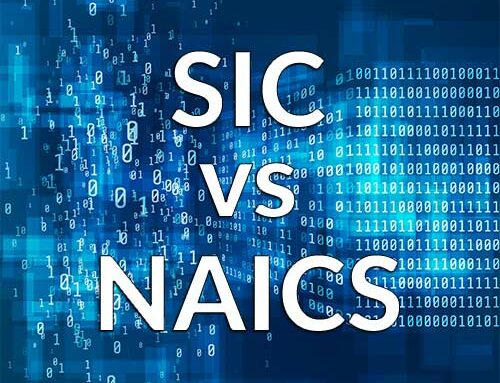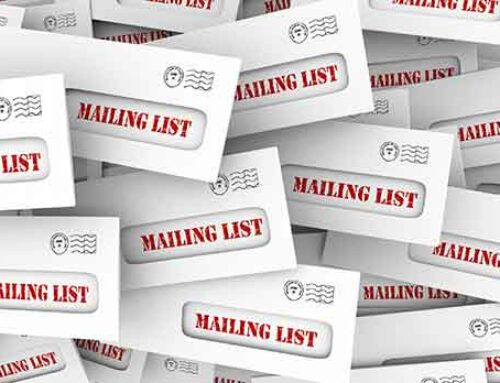 Direct mail is full of terminology which, depending on which side of the mail you’re on, you may or may not be familiar with.
Direct mail is full of terminology which, depending on which side of the mail you’re on, you may or may not be familiar with.
Back in 2014 to celebrate JR Direct’s 25th anniversary we release a 4 part series (Part 1, Part 2, Part 3 & Part 4) on Direct Marketing Terminology. We felt for our 30th anniversary we would revisit the top 100 Direct Mail Terms you need to know.
Below is our top 100 list of mailer, list, and lettershop terms with a brief description of what they mean.
- Acquisition Lists – lists rented for the purpose of acquiring new customers (see List Rental below).
- Action Devices – Mailing items and techniques to initiate a desired response – including coupons, survey forms, reply cards or business reply envelopes.
- Active Buyer – A Buyer whose latest purchase was made within the past twelve months.
- Active Subscriber – A Buyer who has committed for regular delivery of magazines, books, or other goods or services for a time period that is still in effect.
- Addressed Admail / Canada Post Neighborhood Mail – Mailed items bearing a uniform advertising, promotional or solicitation message.
- Alternative Media – any means of reaching consumers other than by using just direct mail and/or telemarketing. Could include co-op mailings, card decks, package inserts etc.
- ASCII (American Standard Code for Information Interchange) – A character encoding format for storing data containing English letters, numbers, and punctuation. ASCII is limited to 128 characters and cannot represent non-English characters. A second encoding format commonly called ‘Extended ASCII’ encompasses for 256 characters, which allows for accented characters used in Romance and Germanic languages (e.g., French, Italian, German). See also Unicode and UTF-8.
- Back End Mailing – additional mailings sent to the people who have responded to your initial offer.
- Base rate – the starting price for a list rental, usually a per thousand record price.
- Bind-In – a printed piece bound into a catalog or magazine. Often a reply card. They are common in magazines for offer subscriptions
- Blow In – a printed card inserted into a publication loosely so that it falls out when the publication is read
- Buckslip – A single, unfolded, promotional piece inserted in a mailing.
- Bulk Mail – Refers to large quantities of mail prepared for mailing at a reduced postage rate.
- Business List / B2B – A list of individuals or companies based upon a business-associated interest, inquiry, membership, subscription or purchase. Records normally contain business addresses as opposed to home addresses.
- Business Reply Mail (BRM) – A response vehicle, in the form of an envelope (BRE) or a card (BRC), which sometimes carries a postage payment guarantee.
- Buyer – An individual who orders merchandise, books, records, information or services. Unless another modifying words are used, it is assumed that a buyer has paid for all merchandise to date.
- Caging – the opening and sorting of orders and the handling of payments.
- Card Deck – a stack of postcards or advertisements mailed together in an envelope, with each card promoting a different product or service.
- Commission – A percentage of sales paid to the List Broker, List Manager, or other service agent for their part in the List Rental.
- Compiled List – Names and addresses derived from multiple sources (directories, newspapers, public records, retail sales slips, tradeshow registrations, etc.).
- Consumer List / B2C – A list of individuals (usually at home address) who have bought merchandise, subscriptions, services, etc. via mail, space, or radio/TV.
- Continuation – when a list has been tested and proven to work, and the mailer continues to rent new updates on an ongoing basis.
- Continuity Program – Products or services bought as a series of small purchases rather than all at one time. These are generally based on a common theme and are shipped at regular or specific time intervals.
- Control – the most successful direct mail piece, determined after testing.
- Co-op Mailing – Two or more offers, usually from different companies, included in the same envelope.
- Counts – the number of records available from a certain list, based on selected criteria.
- Creative – all elements of a direct mail package, including copy, design, colours, images etc.
- CV Report – A computer generated report showing the output after a merge, this report will usually show how many names were dropped as invalid or bad address, or duplicates within a list, or duplicates with other lists. Also called a dedupe report.
- Data Append – when an existing database has additional information added to it, such as phone numbers, birthdates, interests, lifestyles, etc.
- Datacard – a document describing a specific file/list, including pricing, selections and other pertinent information.
- Decoy – A unique name specifically inserted into a rental list for verification of list usage. Also called a Seed.
- De-Duping – The process of removing duplicates from within a file or between multiple files. The methods of identifying duplicates varies from system to system, though the more advanced systems can match duplicates despite misspellings and missing/conflicting address elements.
- Delimited Layout (CSV,TXT) – A compact, variable length, record layout that uses a specific character (comma, tab, semi-colon, etc.) to separate data fields within each record, and a specific character/character pair (<CR><LF>) to denote the end of each record. Individual fields are often surrounded by quotes <“><”> to allow fields to contain the separator character without confusing the layout.
- Delivery Date – The date on which a specific list order is to be received from the List Owner by the list user or designated representative of the list user.
- Direct Mail Advertising – Any promotional effort using a Postal Service or other direct delivery service for distribution of the advertising message.
- Direct Response – An advertising response mechanism, such as a reply card, toll-free number, or reply coupon.
- Direct Response Advertising – Advertising, through any medium, designed to generate a measurable response by any means (such as mail, telephone, television, cable TV, radio).
- Drops – a term for the names and addresses that are taken out of a merge because they are invalid, or bad addresses, or duplicates.
- Duplicates – Two or more name/address records that are found to be equal under the list user’s basis of comparison (match code, mathematical formula, etc.). A duplicate name can be used more than once if a second usage or a second list owner has been approved.
- File Layout – A representation that describes what data is contained in a file, and how that data is organized. A typical file layout shows both the encoding (ASCII,Unicode,UTF-8,etc.) and the layout (delimited,fixed).
- Finder Code – A code (usually numeric) that can be used alone or in conjunction with a Source Code to uniquely identify a single customer/prospect record.
- Fixed Layout – A file layout that uses set field lengths to determine where each data field exists in each record (each field starts and ends at the same location in each record). Fixed layouts may use end-of-record markers as used in Delimited Layout. Note: due to the multi-byte encoding of Unicode and UTF-8, fixed layouts are usually restricted to ASCII encoded files.
- FTP – File Transfer Protocol, a means of downloading and uploading files between two different computers on the internet.
- Fulfillment – The physical handling and shipping of an order, after an order is received.
- Header Record – A special record at the beginning of a data file that contains field identifiers instead of customer data. Header records are frequently used instead of File Layouts for Delimited Layout files.
- Hotline – The most recent names available on a specific list. Typically segregated by a monthly or quarterly date range. Not to be confused with ‘Hot List’, which is a well responding list.
- House List – A List owned by the Mailer, used for a mailing or as a suppression in a Merge/Purge.
- Hygiene – the process that is used to clean data, such as removing duplicates, updating addresses etc.
- Indicia – preprinted mark on the upper right of the mail piece or outer envelope indicating that postage has been paid.
- Inter-file duplication – the duplication of name and address records between more than one list.
- Intra-file duplication – the duplication of name and address records within one list.
- Lead Generation – the process of identifying prospective customers for further marketing efforts.
- Lettershop – A company that handles addressing, imprinting, collating and other mechanical details of mailings.
- List (Mailing List) – A list of names and addresses of individuals and/or companies having in common a specific interest or characteristic of activity.
- List Broker – A specialist who makes all necessary arrangements for one company to make use of the list(s) of another company. A broker’s services may include most or all of the following: research, selection, recommendation and subsequent evaluation.
- List Fulfillment – The process of creating a List Rental file from a client’s customer file.
- List Manager – An agent responsible managing an owner’s lists which usually includes: List maintenance (or advice thereon), List promotion and marketing, list clearance and record keeping, collecting for use of the list by others.
- List Owner – An individual or company who, by promotional activity or compilation, has developed a list of names having something in common. Also, an individual or company who has purchased (as opposed to rented, reproduced, or used on a one-time basis) such a list from the developer.
- List Owner Approval – the approval to use a specific list for a specific mailing, or mailings.
- List Rental – An arrangement in which a list owner furnishes names to a mailer for a one-time use (unless otherwise specified in advance) for a fee. A List Rental is usually transacted through both a List Broker and a List Manager.
- List Selection – A sub-set of names selected from a List based on specific criteria (gender, location, etc.).
- List Source – The media (general or specific) used to generate names on a mailing list. Examples: direct mail, space ads, inserts.
- Mail Date – the date on which the Mailer has the obligation to mail a specific list, based on prior agreement between the List Owner and the Mailer. No other date is acceptable without specific approval of the List Owner.
- Mail Order Buyer – A Buyer who orders and pays for a product or service through the mail. Those who order via telephone or online from direct response advertising may be included in this category, although technically they are not Mail-Order Buyers.
- Mail Piece or Mailing Package – the letter, brochure, postcard etc. which is mailed out. Also referred to as an “offer”.
- Mailer – A company that uses direct mail to promote their products and/or services.
- Match Back – a technique where you take your untracked orders, regardless of source (retail store, phone, Internet, fax), and match them back to your actual mail file, including rented prospect names.
- Match Key – A special data string used to identify duplicates. A match key contains a subset of the customer name and address but is usually generated in such a way that the original record cannot be recreated from the match key. This allows for retaining the match keys for historical matching without violating data protection acts.
- Merge/Purge – A software system that detects and drops duplicates within and between multiple acquisition files. Advanced systems can offer a wide variety of features, including: recency matching, multi matching, and advance matrix reporting.
- Modeling – A technique to determine which pieces of data in your customer database explains the behavior of your customers. The purpose is to create predictions of a likelihood to respond to an offer.
- Multi – when the same name and address shows up on more than one list in a merge/purge.
- Multi-buyer – someone who has purchased two or more times from the same company. Not to be confused with a “multi” from a merge/purge.
- NCOA – National Change Of Address. During a merge, the file(s) are often run against the NCOA to ensure the file is up to date.
- Net Name Arrangement – An agreement between a List Owner and a Mailer, at the time of ordering or before, in which the List Owner agrees to accept adjusted payment based on a quantity less than the total names shipped. The payment quantity can a percentage of names shipped (Net Percent) or the actual quantity mailed (Net/Net). Running Charges may apply.
- Nixie – a mailing piece returned to the mailer by the postal service because of an undeliverable name and address.
- Nth – A way of randomizing names in a large file to get the desired quantity. Rather than taking the first thousand names, a computer program takes every nth name until they achieve the desired quantity.
- Offer / Sample – The terms (pricing, timelines, etc.) under which a specific product or service is promoted. Also, Offer is sometimes used as an alternative definition to Mailing Package or Mail piece.
- One-time Use – This is an intrinsic part of the normal list usage, list reproduction, or list exchange agreement. It is understood that the Mailer will not use the names on the List more than one time without specific prior approval of the List Owner.
- One-time vs. Multi Buyer – Used to differentiate between Buyers who have only purchased once versus multiple times. The latter are much more valued for rental purposes.
- Package Insert – a promotional mail piece that is sent along with a product shipment.
- Post-Merge Split – The process of splitting the post-Merge/Purge output data for a single List into multiple files. This split allows for testing of new offers or for separating the data by geography for region-specific offers.
- Recency – the latest activity recorded for an individual or company on a specific customer list.
- Reformat – The process of converting data files from one record layout to another. When associated with a Merge/Purge, the target record layout will be the client’s preferred layout. Often, address correction and validation (if applicable) is done during the Reformat process.
- Reply Card – A sender-addressed card on which recipients indicate their response to an offer.
- Responder / Inquirer – Similar to a Buyer, except the individual has paid no money and has instead responded to a ‘free’ or ‘trial’ offer, or a ‘send me more information’ promotion.
- Rollout – mailing to the rest of a mailing list after testing the mail piece on a smaller sample of that list.
- Run Charge – A fee charged as part of a Net Name Arrangement for names run and shipped but not used (and not charged at the full rental rate). The purpose of this fee is to help cover processing costs.
- Self-Mailer – A direct mail piece mailed without an envelope (e.g., postcard).
- Service Bureau – A facility providing general or specific data processing services, such as Merge/Purge, Address Correction, and/or List Fulfillment.
- SIC (Standard Industrial Classifications) – A classification of businesses as defined by the U.S. Department of Commerce. These are typically used when renting a Business Lists.
- Source Code / Keycode – A numeric or alphanumeric code that uniquely identifies a List, used primarily for tracking responses back to the List Rental file from which the responding customer originated. It’s used to measure the effectiveness of a list or advertisement. This may also be used in conjunction with a Finder Code to simplify Data Entry.
- Space Advertising – ads placed in print publications.
- Statement Stuffer – small promotional piece inserted into an envelope that contains a billing statement.
- Suppression – a function that removes duplicates or excludes ineligible records from a database. Part of a merge-purge.
- Test – A List Rental (typically utilizing a List Selection and/or Nth Select) used to determine the effectiveness of a List.
- Unicode – A character encoding format for storing data for any language, from Latin-based (English, French, German, etc.) to demographic (Chinese, Japanese, Korean, etc.). Unicode is becoming the standard encoding format, but many legacy systems (especially North American based) are still limited to ASCII.
- Universe – the total number of records on a list.
- Update – when new records, recent transactions or additional information is added to a list
- Usage – a list of mailers who have previously used a list. Can be a good indication of list performance if it is working for others who are selling similar products.
- UTF-8 – A variation of Unicode that is backward compatible with ASCII (UTF-8 is identical to ASCII for English letters, numbers and punctuation). UTF-8 has become the defector standard for web pages, and is competing with Unicode for becoming the overall encoding standard.
So there you have it the top 100 Direct Mail Terms you can’t live without. If you are interested in finding out more about JR Direct can do for you or your project reach out to us with your questions.






